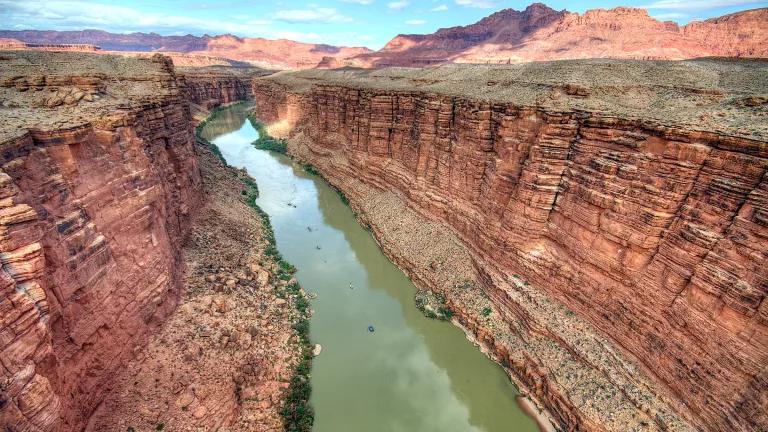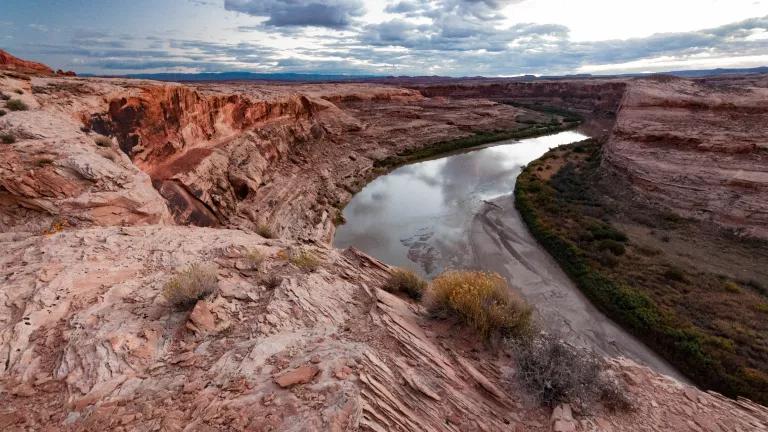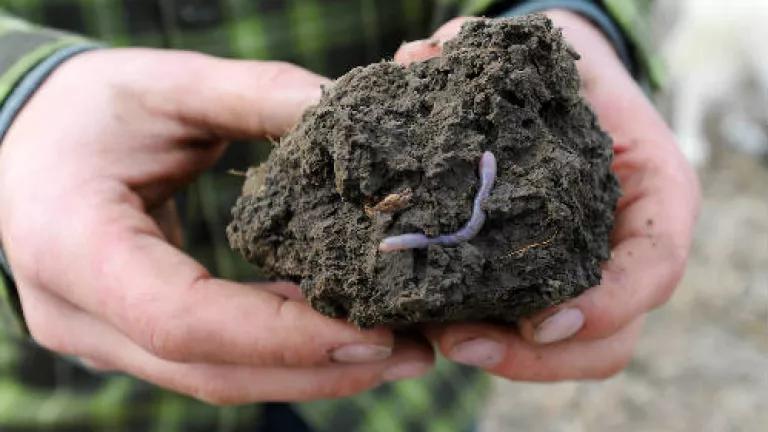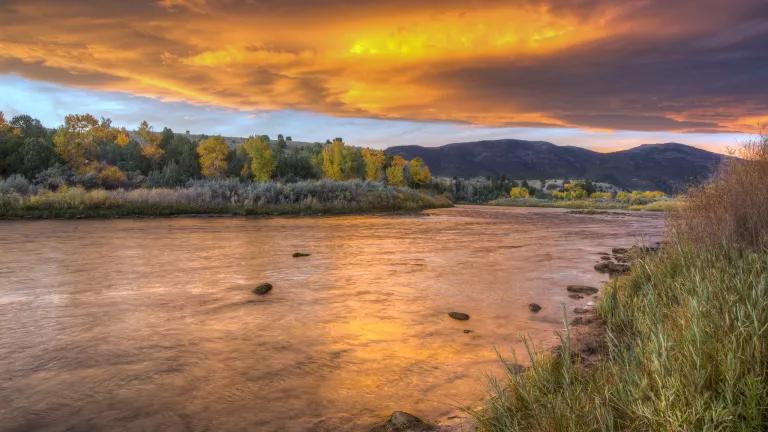At Long Last, the Vision of the Grand Canyon Tribal Coalition Is Realized
The designation of the Baaj Nwaavjo I’tah Kukveni—Ancestral Footprints of the Grand Canyon National Monument is not only extremely popular but its protections are long overdue.

The Colorado River at Marble Canyon
The Grand Canyon is an iconic landscape, recognized around the world and visited by millions of people every year who marvel at the stunning, sunbaked colors of the deep canyon and its limestone cliffs. Among all this beauty and wonder, there is a piece of the Grand Canyon story that is not often told. When Grand Canyon National Park was established in 1919, Indigenous Peoples were forced off their land. For generations since, tribes in the Grand Canyon region have been working to regain access to and greater protections for their ancestral homes. Though this history has often been buried, as President Biden said in his remarks at the monument’s designation, “…we’re making it clear that we can’t just choose to learn what we want to learn.”
The new Baaj Nwaavjo I’tah Kukveni—Ancestral Footprints of the Grand Canyon National Monument, designated by President Biden on August 10, realizes the enduring vision of the Grand Canyon Tribal Coalition, which is led by the Colorado River Indian Tribes, Havasupai Tribe, Hopi Tribe, Hualapai Tribe, Kaibab Band of Paiute Indians, Las Vegas Paiute Tribe, Moapa Band of Paiute Indians, Navajo Nation, Paiute Indian Tribe of Utah, Pueblo of Zuni, San Juan Southern Paiute Tribe, Shivwits Band of Paiutes, and Yavapai-Apache Nation.
The Grand Canyon Tribal Coalition described the profound significance of these lands in its proposal for the new monument in April of this year. The lands include sacred sites like Red Butte, cultural and archaeological sites, springs, and historical sites that figure prominently in Indigenous histories.
In addition to the rich cultural heritage of these lands, the new monument is also home to bald eagles, bighorn sheep, bison, California condors, and elk, among other species. Many of the waterways in the new monument drain to the Colorado River, a critical water source for 40 million people in a climate-stressed West. The designation of the new monument will protect all of these precious resources from the growing threat of new uranium mining—an extraordinarily destructive practice that has already devastated lands and waters across the West and left a toxic legacy in tribal nations and local communities.
This is the third national monument designation that incorporates Indigenous co-stewardship management, modeled after that of Bears Ears National Monument in Utah and Avi Kwa Ame National Monument in Nevada. These monuments direct the U.S. Department of the Interior and the U.S. Department of Agriculture to develop more robust land and cultural protection models in close coordination with tribal governments. Besides the critical role that tribes have assumed in advocating for a more inclusive and equitable management framework, the promise of a co-stewardship framework has been bolstered by the leadership of Interior Secretary Deb Haaland and Secretary of Agriculture Tom Vilsack, who released several critical policy documents and guidance on co-stewardship, including Secretarial Order 3403, which elevates the importance of meaningful partnership with tribes in managing ancestral lands and waters that have been historically managed by the federal government.
At a time when the country seems hopelessly divided on so many issues, the new monument has received broad support. Arizona's governor, both senators, and representatives Ruben Gallego, Raúl Grijalva, and Greg Stanton have all supported the monument’s designation. More than 30 state lawmakers, many local governments, hunting and angling groups, and business owners have also endorsed the proposal. Polling conducted by the Grand Canyon Trust has demonstrated that 75 percent of Arizona voters support designating lands immediately outside Grand Canyon National Park as a national monument.
The widely popular designation of these lands as a national monument is a vitally important step in protecting them from the threat of unchecked uranium mining, an activity that has historically threatened the water supplies in the Grand Canyon region—and continues to do so. There is more work to be done to protect other similarly at-risk landscapes, tribal nations, and communities from uranium mining across the West. It is past time for the Biden administration to enact protective environmental standards that were developed by the U.S. Environmental Protection Agency under the Obama administration but never finalized.




